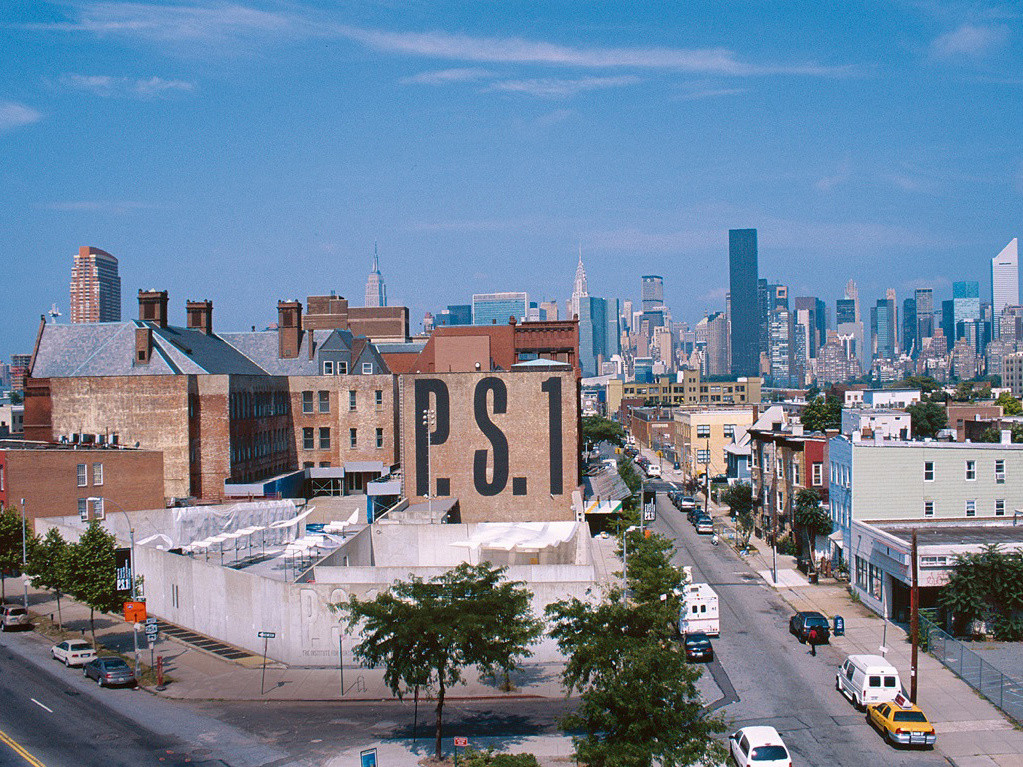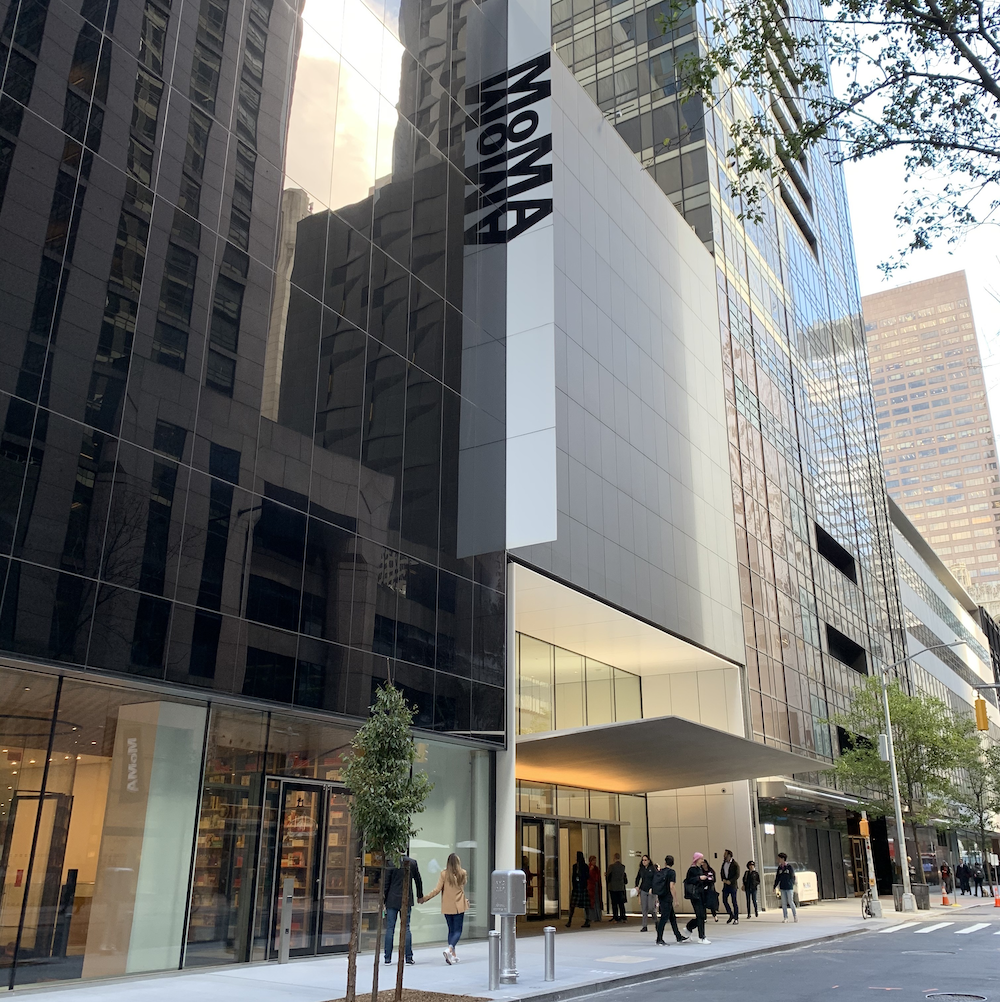The Museum of Modern Art
In the late 1920s, art patrons Lillie P. Bliss, Mary Quinn Sullivan, and Abby Aldrich Rockefeller sought to establish an institution devoted exclusively to modern art. The Museum’s mission began with the vision of its three founders who met on a trip to Egypt in 1928. Bliss was the daughter of a textile manufacturer as well as a collector of modern paintings and prints. Sullivan worked as an art teacher in New York, and although was not a collector of art herself, her husband, Cornelius J. Sullivan, was. Rockefeller, on the other hand, cared deeply for classic and modern art, and shared a “concern for the arts of her own time.” The three banded together to not only continue collecting modern art, but aimed to put it on public display in their newly founded museum. The Museum struggled in a time when “few attempted to collect modern art seriously.” The founders were aware that constructing the MoMA would be a risky venture, but their growing board of trustees, A. Conger Goodyear, Paul Sachs, Frank Crowninshield, and Josephine Boardman Crane, as well as the appointment of Alfred H. Barr Jr. as their director in 1929, proved successful.

When the MoMA first opened on November 7, 1929, the museum was not the institution today’s visitors might expect. At the time, the Metropolitan Museum of Art had the spotlight and did not share it, and it did not feature modern art. When the opening of the MoMA was first announced by the seven collectors and patrons that founded it, the museum was just a few rooms in the Heckscher building, on the corner of 5th Avenue and 57th Street. The MoMA was officially established “in rented quarters on the twelfth floor of an office building at 730 Fifth Avenue…” and held its first exhibition seven days after opening. Yet this did not make a difference. The public’s response was overwhelmingly enthusiastic. On November 8th, 1929, paintings and prints from the combined collections of the founders were featured in the exhibition Cézanne, Gauguin, Seurat, van Gogh, which attracted about 49,000 visitors to the tight gallery rooms of the museum. The following March, 1,500 people a day visited the museum and the trustees had to start charging admission, which would be 50 cents per person, to better manage the flow of visitors. The MoMA lacked a permanent collection until 1931, as all exhibits featured either pieces from the founders’ collections or from temporary donations from trustees. The founders, starting with Bliss, donated works to the permanent collection and allowed for their paintings to be sold to further fund the MoMA. In the next 10 years, the Museum moved three times into larger temporary quarters. In 1932, the museum moved to a site on 53rd Street, and in 1939 opened the building in midtown Manhattan. Over the years, it would evolve into the building MoMA inhabits today, with six floors of galleries instead of six rooms.

The Museum of Modern Art is a comprehensive collection of primarily American and European art ranging from the late 19th century to the present. Its founders dedicated the museum to the most progressive tendencies in modern art. It has an extensive collection of Cubist, Surrealist, and Abstract Expressionist paintings. The museum was one of the first in the United States to include in its collection industrial design, architecture, photography, and motion pictures. The original director Alfred H. Barr Jr. submitted a plan for a multi-departmental structure. Today, these departments include architecture and design, drawings and prints, film, media and performance, painting and sculpture, and photography. The 1939 museum building by Philip Goodwin and Edward Durell Stone was later expanded with an addition designed by Philip Johnson, who also planned the garden in 1953. Expansions took place during the 1950s and 1960s. A major renovation, including a condominium tower and a west wing, doubled the museum’s exhibition space, and was completed in 1984. Continued expansion through enlarging the exhibit space, adding skylights, relocating the main entrance, and building an education and research complex, was designed by Yoshio Taniguchi and completed in 2004. A large expansion also occurred in 2019, with a complete rehang of the collection. The exhibition had formerly been based on chronology, discipline, or region, but this time curators displayed works based on theme and also addressed diversity by integrating more art by women and people of color.
From an initial gift of eight prints and one drawing, The MoMA’s collection has grown to approximately 200,000 works. MoMA also owns approximately two million film stills. The Museum’s Library and Archives contain the leading concentration of research material on modern art in the world, and each of the curatorial departments maintains a study center available to students, scholars, and researchers. MoMA’s Library holds over 320,000 items, including books, artists’ books, periodicals, and extensive individual files on more than 90,000 artists. In addition to gallery talks, lectures, and symposia, the Museum offers special activities for parents, teachers, families, students, preschoolers, bilingual visitors, and people with special needs. In January 2000, the Museum and P.S.1 Contemporary Art Center (now MoMA PS1) exercised a Memorandum of Understanding formalizing their affiliation.

Founded by curator Alanna Heiss, MoMA PS1 (originally known as P.S.1 Contemporary Art Center) was a defining force in the alternative space movement in New York in the 1970s. PS1—a historic 19th century public school building in Long Island City, Queens—has been transformed into a place for artistic experimentation and creativity. Located in what was once a thriving industrial enclave, PS1 has now become a cultural landmark in one of the fastest-growing, urban residential neighborhoods in the country. Decommissioned as a public school in 1963, the building was first secured from the city by the Institute for Art and Urban Resources Inc., a non-profit founded by Heiss in 1972 to provide studios and exhibition space in underutilized buildings across New York City. In 1976, PS1 opened with the seminal Rooms exhibition, which was an invitation for artists to transform the building’s spaces with site-specific installations. Over 70 artists activated the campus, which is a tradition that continues to this day with 15 artist interventions across the building. Artists featured in the showrooms were mostly New York artists. Beginning in 1980, PS1 housed the Department of Cultural Affairs’ Materials Donation Program—now known as Materials for the Arts. Since 1982, PS1 has been a member of the City’s Cultural Institutions Group (CIG) in partnership with the Department of Cultural Affairs—the first member focused on contemporary art. To celebrate its affiliation with the Museum of Modern Art in 2000, Greater New York was launched and has taken place every five years since. PS1’s performances, residencies, and events have grown to include more than 3,000 multidisciplinary artists, musicians, scholars, activists, and thinkers to date. In 1997, a campus-wide renovation included the creation of a large outdoor courtyard. Warm Up summer music series (established in 1998) and the Young Architects Program (1999–2019) were launched. Today, The Museum of Modern Art and MoMA PS1 welcome millions of visitors every year.
The MoMA was the first museum “in America to integrate twentieth-century fine and applied art” and “has built an unrivaled multi departmental collection while at the same time conducting a coherent and adventurous program of exhibitions and related educational activities.” The MoMA, according to its director in 2004, Glenn D. Lowry, is “predicated on a relatively simple proposition, that the art of our time – modern art – is as vital and important as the art of the past.” As of 2004, “The Museum owns over 6,000 drawings, 50,000 prints and illustrated books, 25,000 photographs, 3,200 paintings and sculptures, 24,000 works of architecture and design, and 20,000 films, videos, and other media works.”

Learn More
“About.” MoMA PS1, https://www.momaps1.org/about. Accessed 28 Apr. 2023.
Mcevoy, Amalia. The Museum of Modern Art. 21 Feb. 2020, https://blogs.shu.edu/nyc-history/2020/02/21/museum-of-modern-art/.
MoMA. “The Museum of Modern Art History.” The Museum of Modern Art, https://www.moma.org/about/who-we-are/moma-history. Accessed 24 Apr. 2023.
Rothman, Lily. “The Museum of Modern Art, Then and Now.” Time, 7 Nov. 2014, https://time.com/3559798/moma-history/.
The Editors of Encyclopaedia Britannica. “Museum of Modern Art (MoMA) | History, Collection, & Facts.” Britannica, 20 Mar. 2023, https://www.britannica.com/topic/Museum-of-Modern-Art-museum-New-York-City.